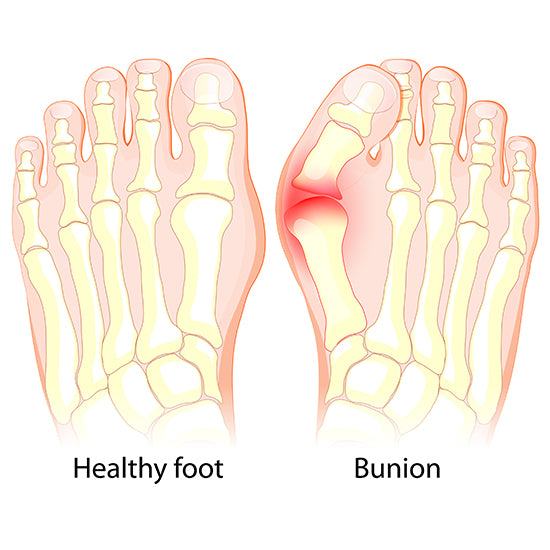Bunions

The medical term for bunions is hallux valgus, which is a common foot deformity characterized by the displacement of the big toe joint. There are several factors that can contribute to the development of bunions. Genetics plays a significant role, , but so does wearing tight or ill-fitting shoes, particularly high heels or narrow-toed shoes. Those types of footwear can place excessive pressure on the toes, leading to the misalignment of the big toe joint over time. Certain medical conditions, such as rheumatoid arthritis, can also increase the likelihood of developing bunions due to their impact on joint health and structure.
SYMPTOMS OF BUNIONS
The friction and pressure on the soft tissue, skin, and bursa of the metatarsal joint can cause extreme discomfort. As the condition worsens, the deformity of the foot can cause a slight dislocation of the joint. The joint will then move unnaturally and cause further accelerated deterioration. These changes in the movement of the joint and foot can also result in the patient having difficulty in controlling their balance. These symptoms can decrease the activity levels and quality of life for people with bunions.
Other symptoms:
- Inflammation
- Tenderness
- Swelling
- Soreness
TIPS TO RELIEVE BUNION PAIN
The first step to relieve bunion pain is to make sure you are wearing shoes that fit properly with a toe box wide enough to accommodate the bunion.
- Orthotics
- Footwear with the correct fit
- Icing the area
- Resting
- Soaking in warm water
- Massaging the area
- Maintain a healthy weight.
*We are not doctors, and the information provided here is only meant for informational purposes. If you suspect you have a foot condition, please talk to your doctor so they can discuss the best solution for you.

